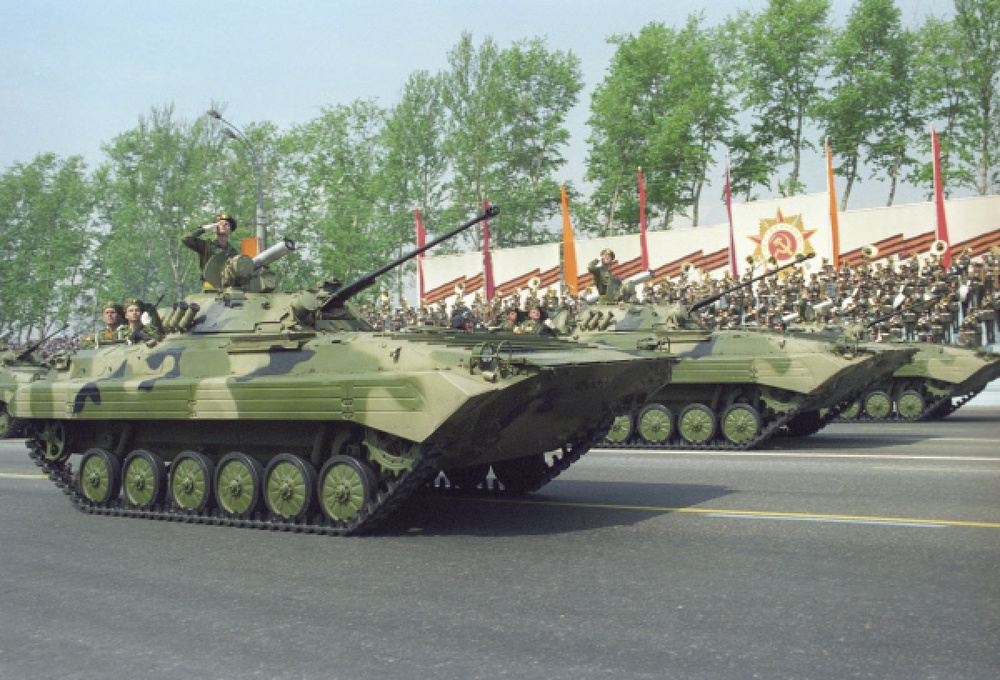
Military forces of Central Asian countries (Kazakhstan, Kyrgyzstan, Tajikistan, Turkmenistan and Uzbekistan) are in fact being financed from the U.S. budget, CentrAsia writes citing Izvestiya magazine. According to the magazine, significant money is allocated for the special forces of these countries. The U.S. Department of State officially announced allocation of $4.2 million for countering drug trafficking in the countries neighboring Afghanistan. Under the Central Asia Counternarcotics Initiative (CACI) this amount will be distributed among “the agencies countering drug trafficking” of the above five countries. Besides, the U.S. Drug Enforcement Administration (DEA) is allocating $14 million and Pentagon provides $101 million to Central Asian armed forces under different CACI programs. According to the expert of the Modern Afghanistan Research Center Andrey Serenko, the U.S., same as Russia, are interested in retaining authoritarian, but secular political regimes in the region. “In their dialog with Tashkent or Dushanbe, Americans are using the same arguments that Moscow used to threaten Central Asian elites, i.e. the threat of islamization, forced change of ruling elite and making Central Asian countries a transit base for drug trafficking from Afghanistan,” the expert says. Meanwhile, Moscow and Washington have different approaches to Central Asian leaders. Russia offers them protection under the Collective Security Treaty Organization (CSTO) and Collective Peacekeeping Forces (CPF) created under the CSTO. Besides security warranties, such protection imposes certain obligations on these countries and involves the elements of transparency and mutual control. Americans prefer to just give the money to local forces without caring for the methods used by special forces of Uzbekistan, Kyrgyzstan or Turkmenistan to counter the drug trafficking at their territory. Latest foreign-policy steps of the U.S. in Central Asian direction, such as lifting the ban for military aid to Uzbekistan in the beginning of February, certify that Washington is ready to cooperate even with the regimes officially considered ‘axis of evil’. Americans have no real choice actually: they need to urgently force Russia out of Central Asian and make the region a base for the U.S. after pulling out American troops from Afghanistan. “Tension rises in Afghanistan against Americans and Hamid Karzai’s administration appointed by Americans,” head of the permanent delegation of the Federation Council in Asian Parliamentary Assembly Rudik Iskuzhin says. “People are becoming more and more prone to turn to Russia.” Recent anti-American riots all around Afghanistan after several copies of Koran were burnt at a U.S. airbase in Bagram showed the fragile position of the U.S. in the country. Stepping back to relatively peaceful Central Asian countries remains the last recourse for Americans.





Military forces of Central Asian countries (Kazakhstan, Kyrgyzstan, Tajikistan, Turkmenistan and Uzbekistan) are in fact being financed from the U.S. budget, CentrAsia writes citing Izvestiya magazine.
According to the magazine, significant money is allocated for the special forces of these countries. The U.S. Department of State officially announced allocation of $4.2 million for countering drug trafficking in the countries neighboring Afghanistan. Under the Central Asia Counternarcotics Initiative (CACI) this amount will be distributed among “the agencies countering drug trafficking” of the above five countries.
Besides, the U.S. Drug Enforcement Administration (DEA) is allocating $14 million and Pentagon provides $101 million to Central Asian armed forces under different CACI programs.
According to the expert of the Modern Afghanistan Research Center Andrey Serenko, the U.S., same as Russia, are interested in retaining authoritarian, but secular political regimes in the region. “In their dialog with Tashkent or Dushanbe, Americans are using the same arguments that Moscow used to threaten Central Asian elites, i.e. the threat of islamization, forced change of ruling elite and making Central Asian countries a transit base for drug trafficking from Afghanistan,” the expert says.
Meanwhile, Moscow and Washington have different approaches to Central Asian leaders. Russia offers them protection under the Collective Security Treaty Organization (CSTO) and Collective Peacekeeping Forces (CPF) created under the CSTO. Besides security warranties, such protection imposes certain obligations on these countries and involves the elements of transparency and mutual control. Americans prefer to just give the money to local forces without caring for the methods used by special forces of Uzbekistan, Kyrgyzstan or Turkmenistan to counter the drug trafficking at their territory.
Latest foreign-policy steps of the U.S. in Central Asian direction, such as lifting the ban for military aid to Uzbekistan in the beginning of February, certify that Washington is ready to cooperate even with the regimes officially considered ‘axis of evil’. Americans have no real choice actually: they need to urgently force Russia out of Central Asian and make the region a base for the U.S. after pulling out American troops from Afghanistan.
“Tension rises in Afghanistan against Americans and Hamid Karzai’s administration appointed by Americans,” head of the permanent delegation of the Federation Council in Asian Parliamentary Assembly Rudik Iskuzhin says. “People are becoming more and more prone to turn to Russia.”
Recent anti-American riots all around Afghanistan after several copies of Koran were burnt at a U.S. airbase in Bagram showed the fragile position of the U.S. in the country. Stepping back to relatively peaceful Central Asian countries remains the last recourse for Americans.


 +7 (777) 001 44 99
+7 (777) 001 44 99















































